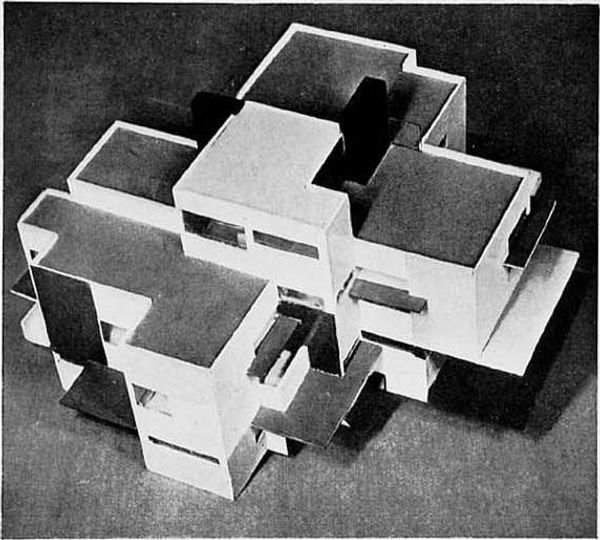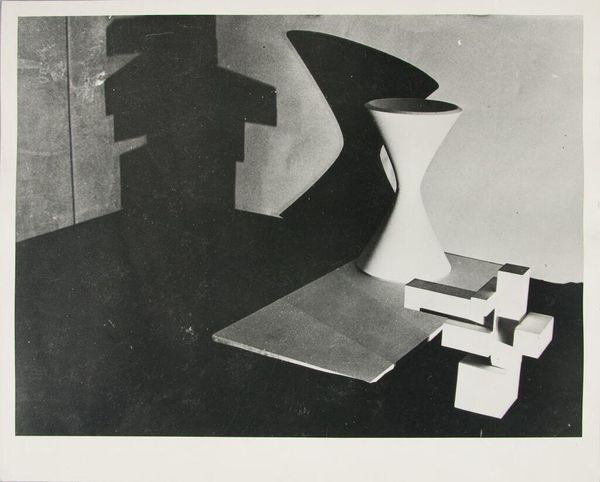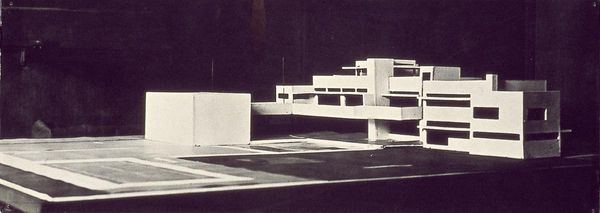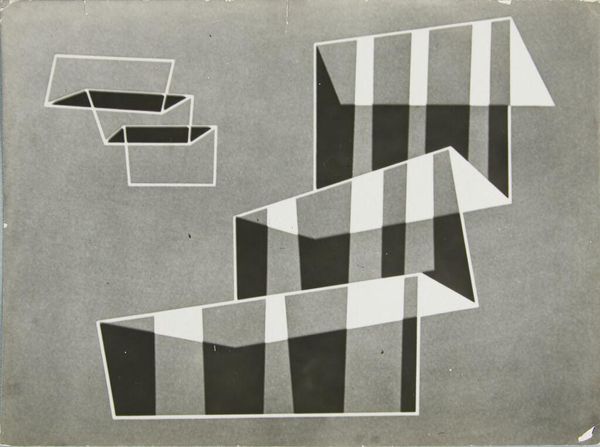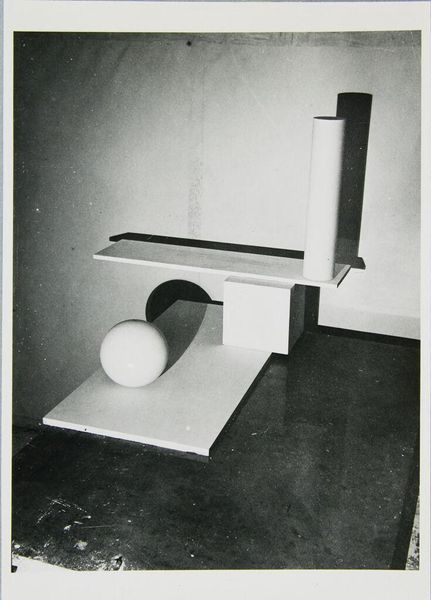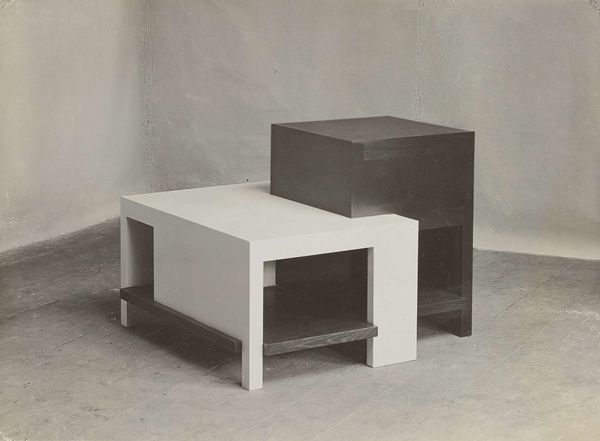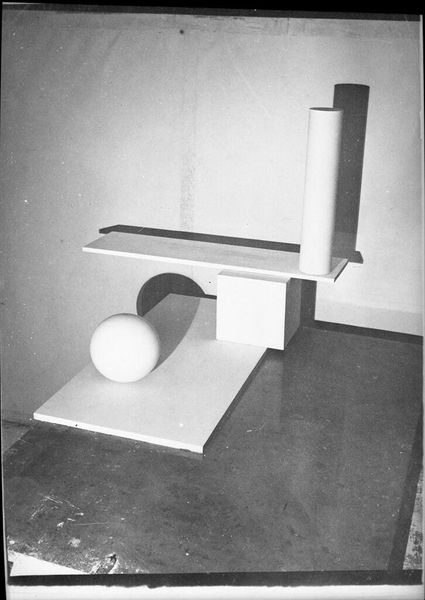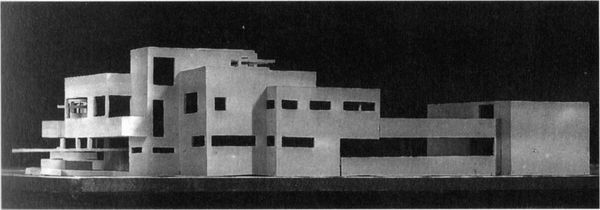
wood, architecture
#
de-stijl
#
geometric
#
abstraction
#
wood
#
architecture
Copyright: Public domain
Editor: Right, so here we have Theo van Doesburg’s “Model of artist’s house,” created in 1923 from wood. It’s a striking collection of geometric forms that remind me a bit of a puzzle box…a really austere one! How would you interpret this work? Curator: Puzzle box is spot on! It is that tension between playfulness and cold geometry that intrigues me, you know? Van Doesburg, a central figure in De Stijl, wasn’t just designing a building. He was, in essence, proposing a new way of living, thinking, *being* through pure abstraction. Imagine the guts it must take to push for that radical vision? Editor: Absolutely. It is pretty revolutionary... like nothing else from the period. Do you think he saw it as a functional space or something more symbolic? Curator: That's a layered question, isn't it? De Stijl aimed at a universal aesthetic language; architecture freed from the baggage of history or personality. But doesn't a home always betray its inhabitant in some subtle way? I see the ghost of that tension. Think about how such severe angles would affect the light. Would the lack of ornamentation foster contemplation or claustrophobia? Editor: Wow, I never considered that, thinking about the actual light hitting the sharp edges! It does make me think more deeply about the potential impact it might have on daily living. Thanks! Curator: My pleasure. Remember, art often resides not just in the creation, but the questions it inspires, wouldn't you agree?
Comments
No comments
Be the first to comment and join the conversation on the ultimate creative platform.
